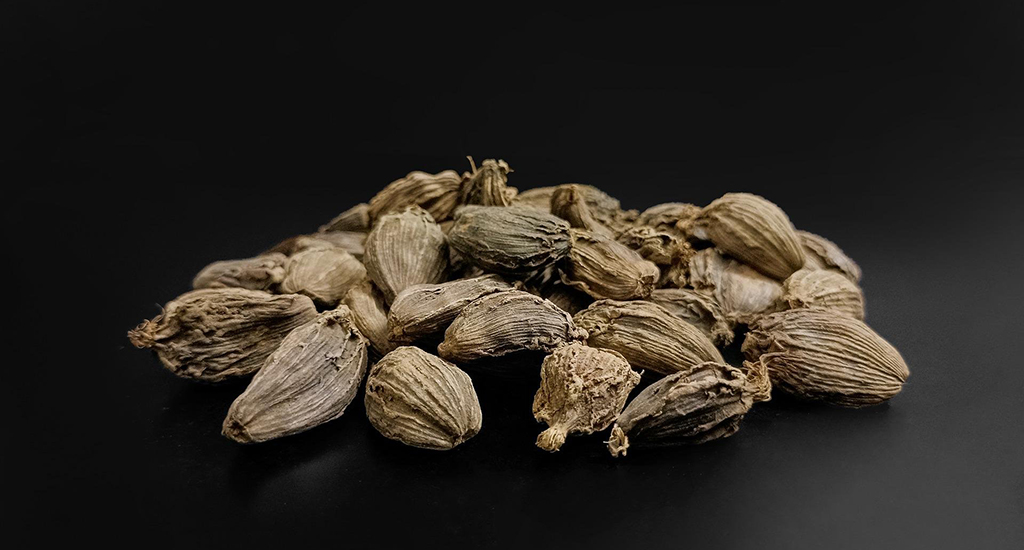
Black cardamom loses flavour among Kalimpong farmers
Farmers who considered black cardamom a golden crop are now shifting to other crops due to losses caused by plant diseases and their own reluctance to adopt modern farming practices.

Farmers who considered black cardamom a golden crop are now shifting to other crops due to losses caused by plant diseases and their own reluctance to adopt modern farming practices.
Pawan Lepcha has been cultivating black cardamom for over a decade in the Kalimpong district of West Bengal.
But, like many other farmers, he is now contemplating growing coffee in the two acres he owns in Lower Mechu Sakyon village instead.
Farmers growing black cardamom (Amomum subulatum Roxb) – also known as large cardamom – once considered this must-have flavouring agent in Indian kitchens a surefire profitable crop.
But not anymore.
Most Darjeeling and Kalimpong farmers want to reduce cardamom cultivation and grow other crops as it is no longer profitable.
Black cardamom is cultivated in India’s northeastern states and neighbouring Nepal and Bhutan.
Farmers in Bengal say that diseases affecting the flavour and growth are the reason for the cardamoms not being profitable.
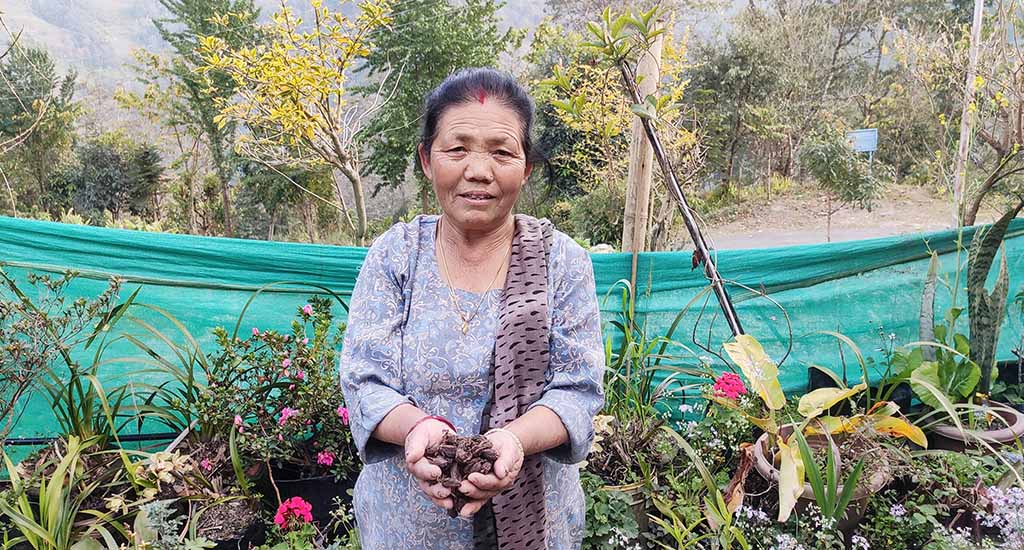
“Chirke and foorkey diseases have almost destroyed the crop. The problem has been increasing each year,” said Rinzee Bhutiya, a cardamom farmer in Sakyon village.
Chirke is a Nepali word for streak mosaic disease. Foorkey – also a Nepali word – causes stunted shoots to grow at the base of an infected clump.
“Chirke is characterised by pale streaks on leaves which gradually turn brownish and dry up. The disease results in progressive degeneration of the cardamom clump,” said D Burman, principal scientist at Indian Agricultural Research Institute, in Regional Station, Kalimpong.
“Both the diseases have been around for over five decades. But their intensity has increased due to farmers’ callousness. They don’t bury or burn the infected plant debris,” Barman told Village Square.
Lepcha said that they buy seeds from fields that have had diseased plants.
“It’s proving to be fatal as the new plants get infected and the vicious cycle is continuing,” said Lepcha.
According to Bhutiya, they have tried several techniques to control the disease but failed.
Scientists said that cardamom cultivation was already hit by natural disasters like drought, rainfall and snowfall. The occurrence of fungal and viral diseases is making the situation worse.
Because of the diseases, the fruits and seeds can be 85% damaged by the third year of infection.
“The diseases not only affect the flavour but also makes the spice brittle. So farmers don’t get a high price because of quality loss,” said Binod Rai, assistant director of the agriculture department in Kalimpong division.
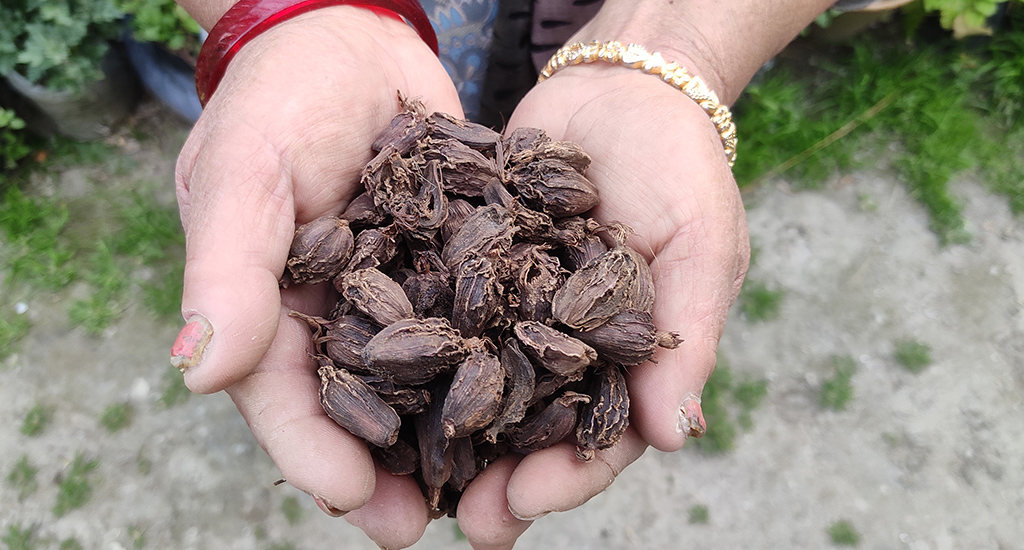
Lepcha agrees that their cardamom is not as good as that from the other states.
Farmers said that they had considered the large cardamom a golden crop because of its high returns. But now the situation has changed.
“Six years ago, I harvested 120-130 kg from one hectare. Now it’s fallen to just half of it,” said Lepcha.
Six years ago, I harvested 120-130 kg from one hectare. Now it’s fallen to just half of it.”
The loss of quality has affected the price of the produce and hence the farmers’ profit. From Rs 2,400 per kg, the price has drastically reduced to Rs 500 per kg.
“The rising farming cost and falling returns is making it impossible to grow cardamom. Several farmers have lost interest in growing it,” said Lepcha.
Government officials admit that the cardamom acreage in the hills has come down.
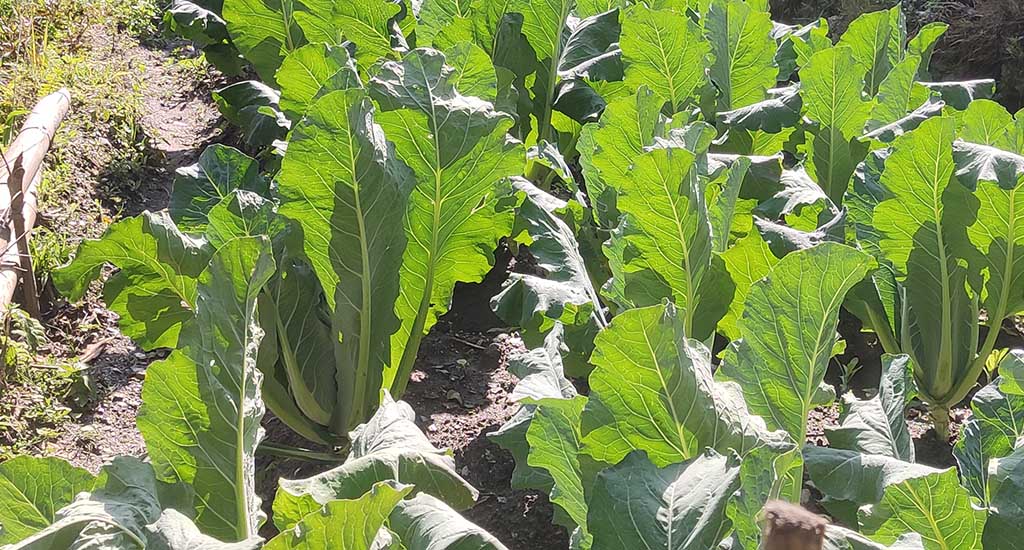
“There were around 3,000 hectares of cardamom a decade ago. It has now come down to 1,530 hectares,” said Binod Rai.
The total production of large cardamom stood at 8,803 tonnes in 2020-21.
With 4,970 tonnes, Sikkim stood first in large cardamom production, accounting for 11% of India’s total production in 2020-21. West Bengal came a distant second with 1,100 tonnes, accounting for just 2.46%. (ALSO READ: Cardamom hills of Kerala face daunting drought)
Apart from diseases, farmers face tough competition from other cardamom-producing places like Nepal, Sikkim, Andhra Pradesh, Manipur and Mizoram, most of which use more modern techniques.
Farmers in other places have already switched to drying cardamom in a machine, which gives better results. But the farmers in Kalimpong still use the traditional mud furnace for drying.
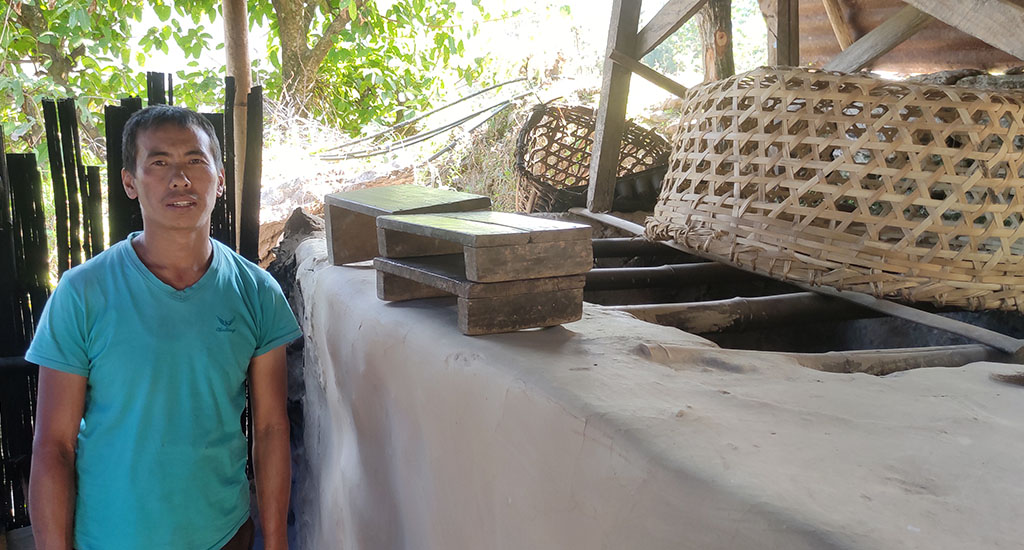
“It takes at least two days to dry around 65 kg of cardamom in the traditional mud furnace,” said Bikash Rai, a cardamom farmer in Lower Mechu Sakyon village.
The process consumes a lot of firewood.
“We are blessed with vast forests. So wood is not a problem, but still it’s destroying our environment,” Bikash Rai told Village Square.
Besides, the growers have to spend additional labour costs for collecting the wood from the forest.
“The cardamom also turns smoky and loses its flavour due to exposure to the fire for a long time,” said Bikash Rai.
Part of the problem is a lack of awareness about cardamom dryers.
“The government offers 33% subsidy to buy the dryers. But farmers in Bengal’s villages seem to be unaware,” said Joby Jose, chief executive officer (CEO), of Aayush Engineering Works, a Kerala-based manufacturing company.
His company has sold nearly 50 machines to other states in the past few years, but only three to farmers in the Darjeeling district.
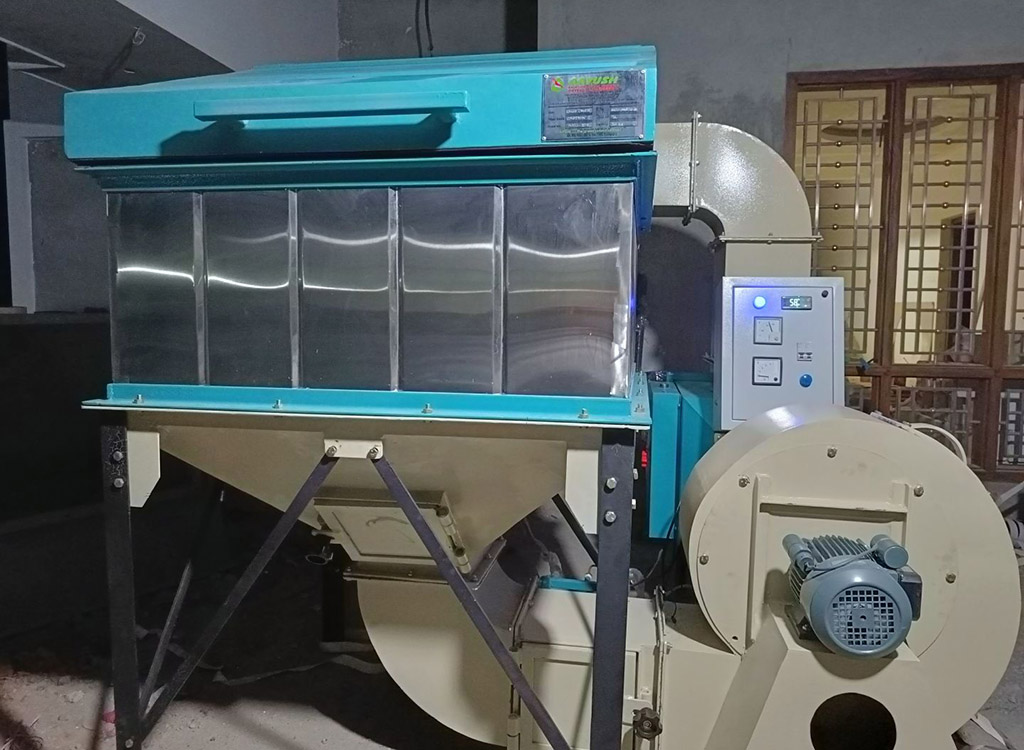
The machines’ drying capacity ranges from 100 to 5,000 kg – costing between Rs 3 and 18 lakh.
“The traditional furnaces take days to dry the cardamoms. But the machines take just 14-15 hours irrespective of the capacity. So it saves labour and time,” said Jose.
He agrees that using the machines helps preserve the colour and flavour of cardamom too.
As dark clouds began to cover the green mountains, Bikash Rai and his wife covered their bamboo house with polythene sheets to protect the mud furnace. They had no time to enjoy nature.
“Enjoying nature is a luxury for us. Our immediate concern is to protect the source of our livelihood,” he said.
The lead image at the top of this page shows large cardamom. Picture courtesy: Jaspreet Kalsi, Pixabay.